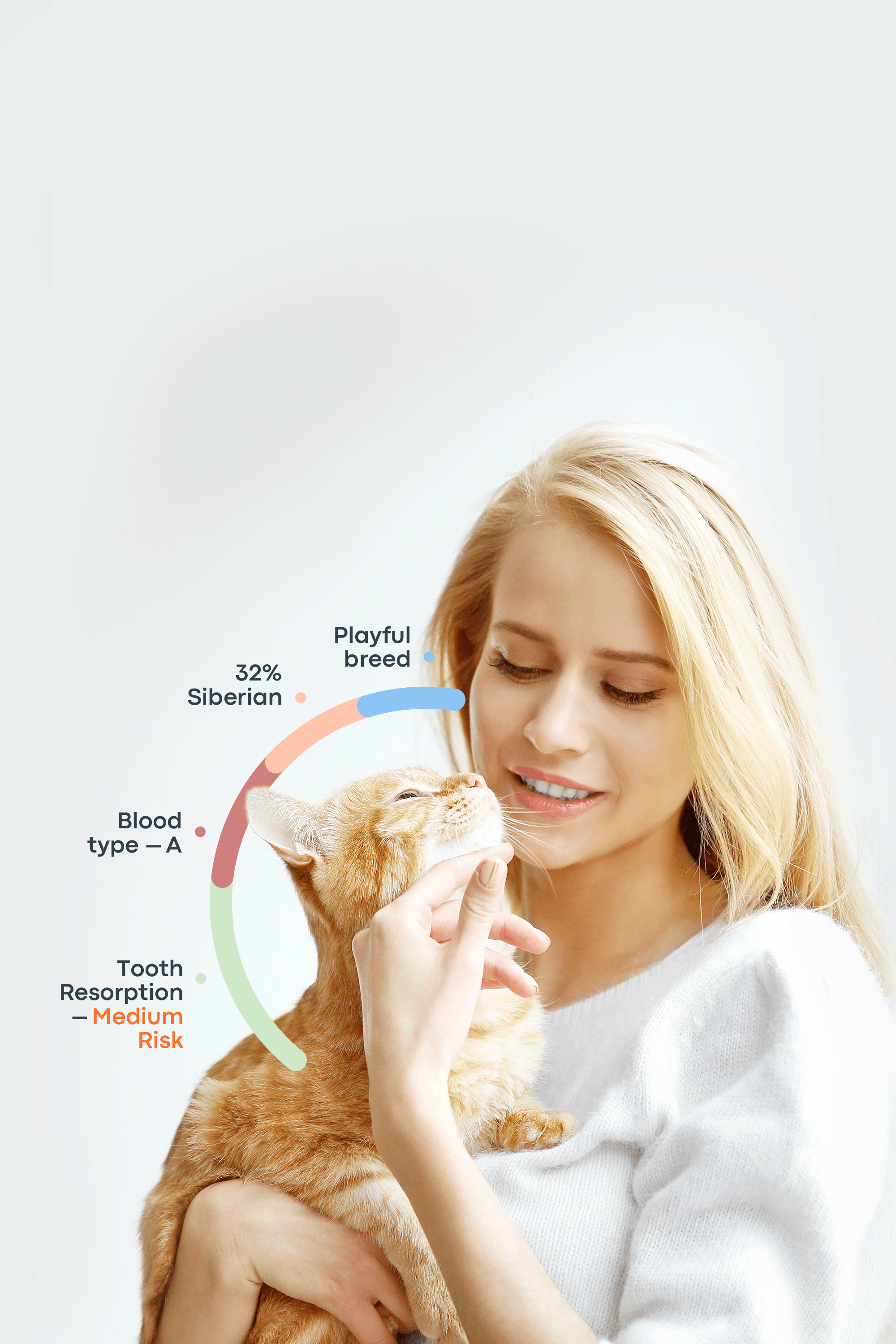If your dog feels unusually warm, it’s natural to worry — but hear this out. Dogs normally have a higher body temperature than humans, though fever can signal an infection, inflammation, or another health issue that you should not ignore. The good news is that with this guide, you will learn how to recognize, measure, and manage fever safely.
Key Takeaways
A dog’s normal body temperature ranges between 101–102.5°F (38.3–39.2°C).
For a dog, fever temperature is over 103°F (39.4°C).
A temperature of 106°F (41.1°C) or higher is a life-threatening emergency that requires immediate veterinary care.
To check accurately, use a digital rectal thermometer (most reliable) or a dog-specific ear thermometer. Checking a dog’s nose for wetness or dryness is not a dependable method.
Call your vet if the fever lasts more than 24 hours, is recurring, or comes with symptoms such as loss of appetite, vomiting, diarrhea, coughing, shivering, or unusual lethargy.
What Is a Dog's Normal Temperature?
While the average human body temperature ranges from 97.6–99.6°F (36.4–37.6°C), a dog’s normal body temperature is slightly higher. According to the American Kennel Club, most healthy dogs fall between 101–102.5°F (38.3–39.2°C).
To make it easier to understand what’s normal and what requires veterinary attention, here’s a breakdown of temperature ranges in dogs:
Classification | Temperature (°F) | Temperature (°C) | Notes |
Normal | 101–102.5°F | 38.3–39.2°C | Typical healthy range |
Elevated | 102.6–103°F | 39.2–39.4°C | Slightly above normal — may or may not indicate illness |
Fever | Over 103°F | Over 39.4°C | Suggests the body is fighting infection or inflammation — contact your vet |
Emergency | Over 106°F | Over 41.1°C | Life-threatening medical emergency — seek immediate veterinary care |
It’s important to note that several factors can cause temporary changes in your dog’s body temperature without indicating illness:
Age: Puppies and senior dogs are more sensitive to temperature fluctuations.
Time of day: Temperatures can be slightly higher in the evening.
Physical activity: Exercise and play can cause short-term increases.
Stress or excitement: Anxiety, travel, or even a vet visit can raise a dog’s temperature.
Because of these natural variations, a single elevated reading may not always mean fever. It’s best to check again after your dog has rested and to look for other signs of illness, such as lethargy, appetite loss, or shivering.

Dog Fever Symptoms
Fever in dogs can show up in different ways, and knowing the signs can help you take action early. Some of the most common symptoms include:
Red or glassy eyes
Lethargy or low energy
Warm, dry nose (not always reliable on its own)
Warm ears
Shivering or trembling
Loss of appetite
Coughing
Vomiting or nausea
Panting or rapid breathing
Runny nose
In more serious cases, dogs with high fever may develop severe symptoms such as:
Seizures
Collapse or extreme weakness
Disorientation or confusion
Important: Puppies, senior dogs, and those with weakened immune systems are more vulnerable and may need veterinary care much sooner, even if their symptoms appear mild.

What Causes a Fever in Dogs?
A dog’s fever is usually the body’s natural way of fighting off an illness or responding to an internal problem. Understanding the possible causes can help you and your veterinarian narrow down what might be going on.
Common causes of fever in dogs include:
Infections
Bacterial (such as urinary tract infections, infected wounds, or abscesses), fungal (like ringworm or systemic fungal infections), or viral illnesses (including canine distemper or influenza) can all trigger the immune system to raise body temperature. For example, a skin abscess often causes swelling, pus, and fever as the body fights the infection.
Inflammation
According to PetMD, autoimmune disorders or inflammatory conditions, such as pancreatitis, can trigger the immune system to overreact. In pancreatitis, the pancreas becomes inflamed, and fever is a common symptom.
Vaccination reactions
It’s not unusual for dogs to develop a mild, short-lived fever within a day after routine vaccinations. This is generally harmless and shows the immune system is responding to the vaccine.
Toxin ingestion
Eating toxic substances—such as certain human medications, chocolate, harmful plants, or spoiled food—can trigger systemic inflammation and raise body temperature. For example, moldy food from the trash may contain mycotoxins, which can cause tremors, vomiting, and fever.
Fever of unknown origin (FUO)
In some cases, even after thorough diagnostic testing, the exact cause of the fever cannot be determined. These cases are classified as fever of unknown origin.
Note: Because the causes of fever in dogs range from mild to life-threatening, it’s best to contact your veterinarian if your dog has a persistent or high fever, or if symptoms worsen.
How to Tell If Dog Has Fever?
Symptoms alone can be misleading. Dogs normally run warmer than humans, and stress or excitement can bump a dog’s temperature slightly. The only reliable way to confirm fever is with a thermometer. So, how do I know if my dog has a fever?
Quick checklist
Watch behavior: Lethargy, loss of appetite, shivering/trembling, or unusual panting.
Feel for heat (with caution): Warm ears or paws can hint at fever, but this isn’t diagnostic.
Scan for other signs: Red/glassy eyes, vomiting, runny nose, coughing.
Confirm with a thermometer:
Best: Digital rectal thermometer.
Alternative: Dog-specific ear (tympanic) thermometer.
Not reliable: Nose checks or human forehead/skin thermometers.
Recheck after rest: If you get a borderline reading, let your dog rest 30–60 minutes in a cool, calm space, then recheck.
Interpreting the reading
Normal: 101–102.5°F (38.3–39.2°C)
Slightly elevated (recheck): 102.6–103.0°F (39.2–39.4°C)
Fever (call your vet): >103°F (>39.4°C)
Emergency: ≥106°F (≥41.1°C) — seek immediate veterinary care.
Puppies, seniors, and immunocompromised dogs need faster vet attention, even with mild signs.
How to Check Your Dog’s Temperature
Safety first
Never use a glass/mercury thermometer.
Have a helper to gently steady your dog if possible.
Stop if your dog is highly distressed or aggressive—call your vet for guidance.
Avoid timing right after exercise, a car ride, or grooming dryers. Wait 15–30 minutes for a resting measurement.
Rectal thermometer (most accurate)
Prepare the device: Use a digital pet/rectal thermometer (ideally with a flexible tip). Turn it on.
Lubricate the tip with a small amount of petroleum jelly or water-based lubricant.
Position your dog: Have your helper hold your dog standing or in a comfortable side stand.
Lift the tail and insert 1 inch (small dogs) to 1–2 inches (medium/large) into the rectum—gently.
Hold in place until it beeps/reads (usually 10–60 seconds).
Remove and read. Clean the thermometer thoroughly (soap and water, then wipe with alcohol), and label it for pet-only use.
Ear (tympanic) thermometer (less invasive)
Use a dog-specific ear thermometer.
Gently lift the ear flap up and back to straighten the canal.
Insert the probe just enough to seal the canal (do not force).
Hold until it beeps, then read.
Avoid ear measurements if there’s ear infection, heavy debris, or recent ear surgery—readings may be inaccurate.
Recording & follow-up
Write down the temperature, time, site (rectal vs ear), and symptoms.
Repeat once after 30–60 minutes at rest if the first reading is borderline. Use the same device and site for consistency.
When to call the vet
Temp >103°F (39.4°C), fever lasting >24 hours, or fever with worrisome signs (persistent vomiting/diarrhea, cough, severe lethargy, seizure, collapse, disorientation).
Immediate care for ≥106°F (≥41.1°C).
Do not give human medications (e.g., ibuprofen, acetaminophen, aspirin) unless your veterinarian specifically instructs you—many are dangerous for dogs.
How to Tell If a Dog Has a Fever Without a Thermometer
If you don’t have a thermometer handy, you can look for physical and behavioral changes that may suggest a fever. These include:
Lethargy or unusual tiredness
Shivering or trembling
Excessive panting
Warm ears or nose
Red or glassy eyes
Loss of appetite
While these signs can point to fever, they can also indicate other health problems. That’s why the only reliable way to confirm fever is with a rectal or ear thermometer. The popular “nose test” (feeling if the nose is warm or dry) is not accurate.
If your dog shows multiple signs of illness or seems unwell, contact your veterinarian right away.
What to Do If My Dog Has a Fever
If you suspect or confirm that your dog has a fever, here are immediate steps to take:
Confirm with a thermometer:
Normal: 101–102.5°F (38.3–39.2°C)
Fever: Above 103°F (39.4°C)
Emergency: 106°F (41.1°C) or higher
Record details: Note your dog’s temperature, symptoms (vomiting, diarrhea, coughing, nasal discharge, wounds, or swelling), and when they started.
Cool your dog safely:
To reduce the dog's body temperature, use a cloth soaked in cool water to gently wipe their ears and paws, according to Carolina Veterinary Specialists in Huntersville.
Offer fresh water: Encourage drinking, but don’t force it. Small sips help prevent dehydration.
Call your veterinarian:
Always if the temperature is above 103°F or lasts more than 24 hours.
Immediately if the fever reaches 106°F or higher, or if symptoms worsen.
How to Comfort a Dog With a Fever
While waiting for veterinary advice or care, keeping your dog comfortable can make a big difference:
Provide a cool, quiet space: Choose a calm, dim, and well-ventilated area where your dog can rest.
Offer soft bedding or a blanket: Familiar items help them feel safe and secure.
Hydration support: Provide small sips of fresh, cool water, or offer ice chips if your vet approves.
Stay close and calm: Sit nearby, speak softly, and reassure your dog — your presence can reduce stress.
Monitor closely: Keep a written log of temperature, symptoms, and behavior changes to share with your veterinarian.
Important: Do not give your dog human fever-reducing medications (such as ibuprofen, aspirin, or acetaminophen) unless prescribed by your vet, as many are toxic to dogs.
Dog Fever Treatment

Treating your dog’s fever involves supportive care at home (only with your veterinarian’s guidance) and, when necessary, professional treatment.
At-home comfort care
If your dog has a mild fever and your vet approves, you can help keep them comfortable by:
Applying a cool, damp cloth to their paws, ears, and belly/groin area.
Using a fan for gentle cooling in a well-ventilated room.
Offering fresh, cool water in small amounts to prevent dehydration.
Providing a quiet, cool, and stress-free space for rest.
Avoiding ice baths, alcohol rubs, or human fever-reducing medications, as these can be dangerous.
Do not force activity. Let your dog rest until they are feeling stronger.
When veterinary care is essential
If your dog’s temperature is 103°F (39.4°C) or higher, or if the fever lasts longer than 24 hours, seek veterinary care immediately. Your vet may perform diagnostic tests such as:
Complete blood count (CBC) to check for infection or inflammation.
Urinalysis to detect urinary tract or kidney problems.
Biochemistry profile to evaluate organ function.
Depending on the underlying cause, the veterinarian may prescribe:
Antibiotics or antivirals for infections.
IV fluids to prevent dehydration and support recovery.
Anti-inflammatory medications to reduce fever and discomfort.
Conclusion
Recognizing and properly checking a fever in your dog is an important part of protecting their health. While mild, short-term temperature changes may resolve on their own, a persistent or high fever always warrants a call to your veterinarian. Trust your instincts — quick action and supportive care can make a big difference in helping your dog recover comfortably.
Frequently Asked Questions
Can dogs get fevers?
Yes, dogs can get fevers, which is a raised body temperature higher than the normal dog temperature range of 99.5°F to 102.5°F. A fever is generally a symptom, not a disease, signaling a response to an underlying problem like an infection or inflammation.
How to tell if dog has fever? What happens when a dog gets a fever?
Dogs with fever often show loss of appetite, lethargy, shivering, panting, warm ears, or a dry nose. Other signs may include vomiting, coughing, or nasal discharge. The only reliable way to confirm fever is with a thermometer.
Is it possible for a dog's fever to resolve on its own without treatment?
Sometimes. A mild fever may resolve without treatment, especially if triggered by vaccination or a minor infection. However, it’s important to monitor your dog closely. Contact your vet if the fever lasts more than 12–24 hours or is accompanied by other symptoms.
Do dogs die of a 103°F fever or a 105°F fever?
103°F (39.4°C): Concerning, but not usually life-threatening by itself — call your vet if it persists.
105°F (40.5°C) or higher: Potentially life-threatening, especially if prolonged or due to serious conditions like heatstroke or severe infection. Immediate veterinary care is required.



